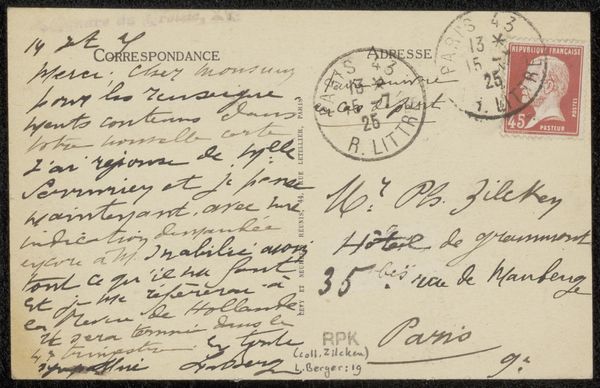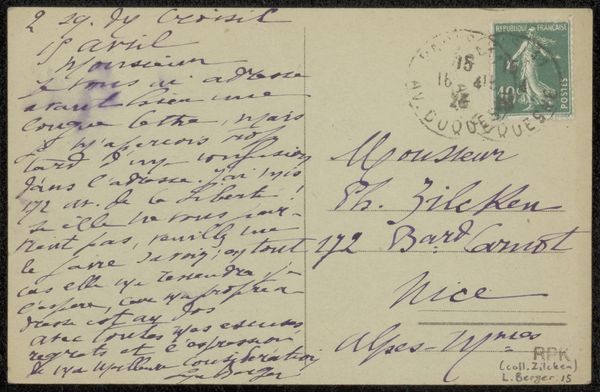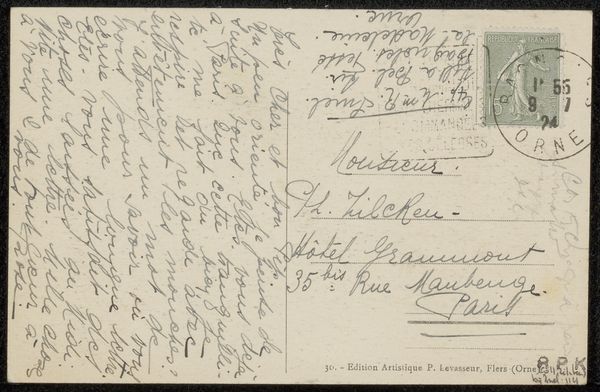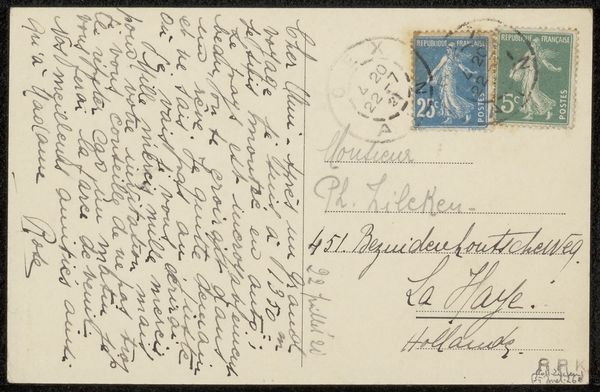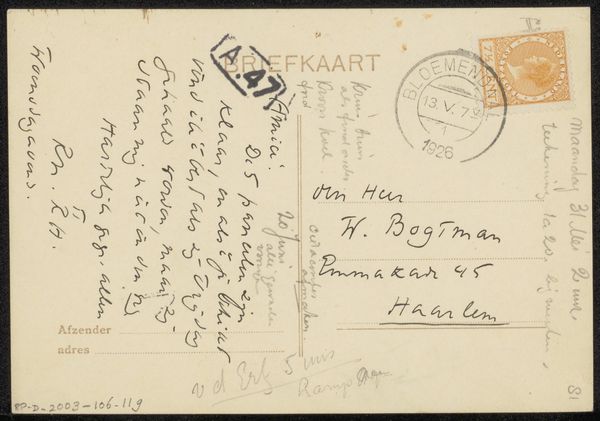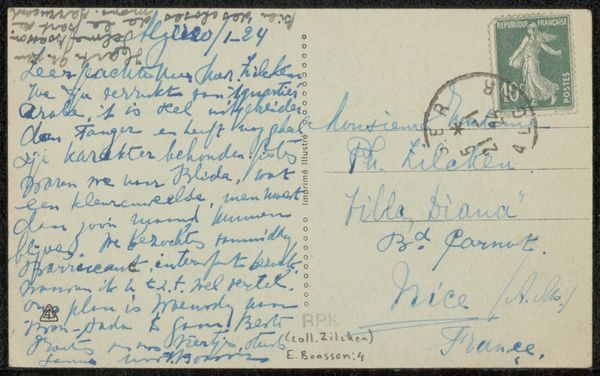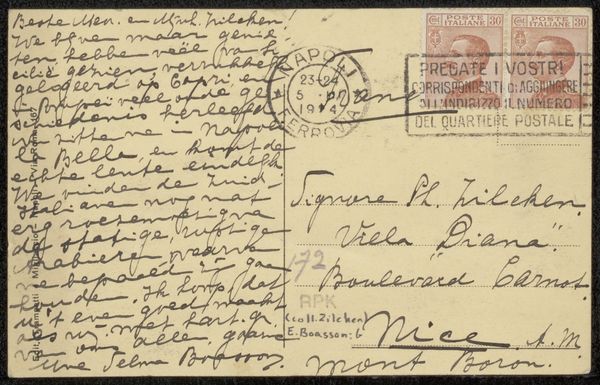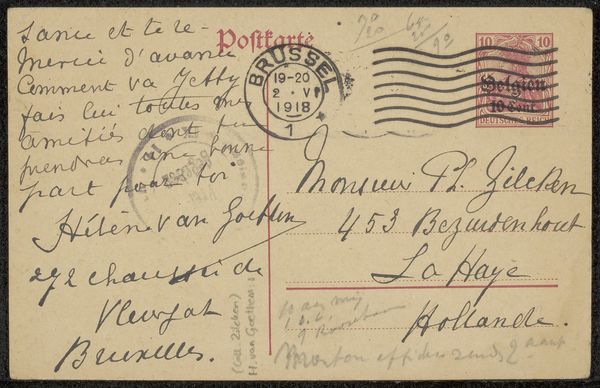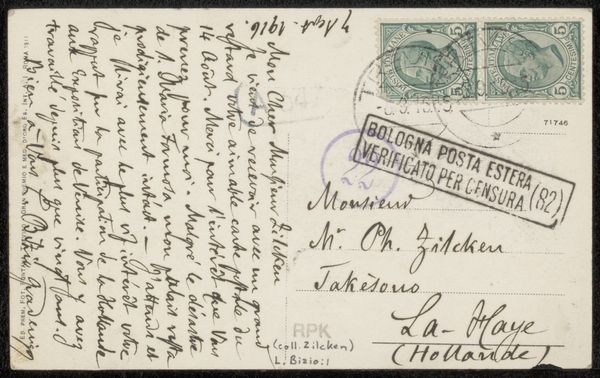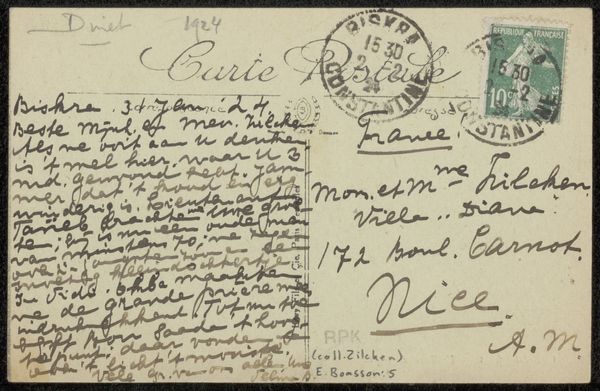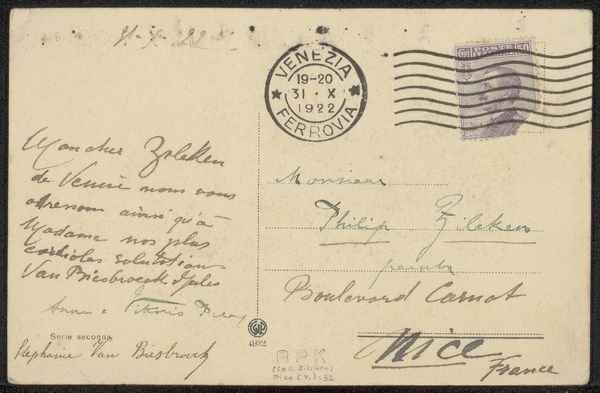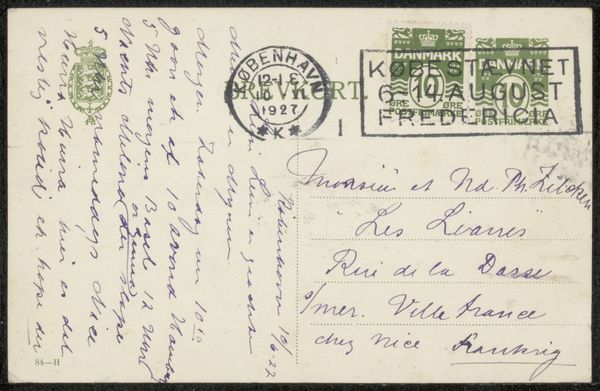
paper, photography, ink
#
comic strip sketch
#
pen sketch
#
paper
#
photography
#
personal sketchbook
#
ink
#
sketchwork
#
ink drawing experimentation
#
pen-ink sketch
#
pen work
#
sketchbook drawing
#
storyboard and sketchbook work
#
sketchbook art
Copyright: Rijks Museum: Open Domain
Curator: This is a prentbriefkaart, or picture postcard, addressed to Philip Zilcken. Though undated, the postal stamp indicates it was sent sometime before 1924, providing a small window into the artist’s life at that time. It looks like ink on paper, a personal correspondence, perhaps. What strikes you about it? Editor: My first impression is intimacy. Despite being a photographic reproduction, the handwriting and casual composition feel very personal, like a glimpse into a private moment. The text seems to dominate. Curator: Indeed, the text is key. Addressed to "Monk and mear, hilaken" – likely endearing terms or nicknames – it discusses travel plans, luggage worries, and general updates on the sender's activities. We must ask about the class dynamics. It reads like leisure and ease which implies both financial security and access. Editor: Absolutely. Contextualizing this postcard within early 20th-century European society reveals certain privileges assumed within the message. Who could afford extended travel and maintain connections across such distances? Also, who has servants for childcare? Curator: Exactly. Consider too the cultural landscape of the time. Zilcken himself was a Dutch painter, printmaker, and writer deeply engaged in the art world. Boasson writes to Nice with her family in tow! The act of sending art to an established man is telling of her confidence, networks, or education. Editor: Looking closer, there's a visual rhythm established by the handwritten lines, almost like musical notation. It obscures the photograph and suggests that text, context, and story hold much of the emotional weight of the picture. Curator: The postcard becomes a physical record of a social and intellectual exchange. Beyond a simple greeting, it becomes an intersectional document which weaves narratives around identity, location, class, and more. A woman writes on what it's like to go about one's daily life, but with great attention to the recipient. Editor: For me, it’s the tangible connection to a specific moment. I love that a mundane, material artifact reveals how history resides even in fleeting exchanges, beyond established archives and instead in personal stories.
Comments
No comments
Be the first to comment and join the conversation on the ultimate creative platform.
